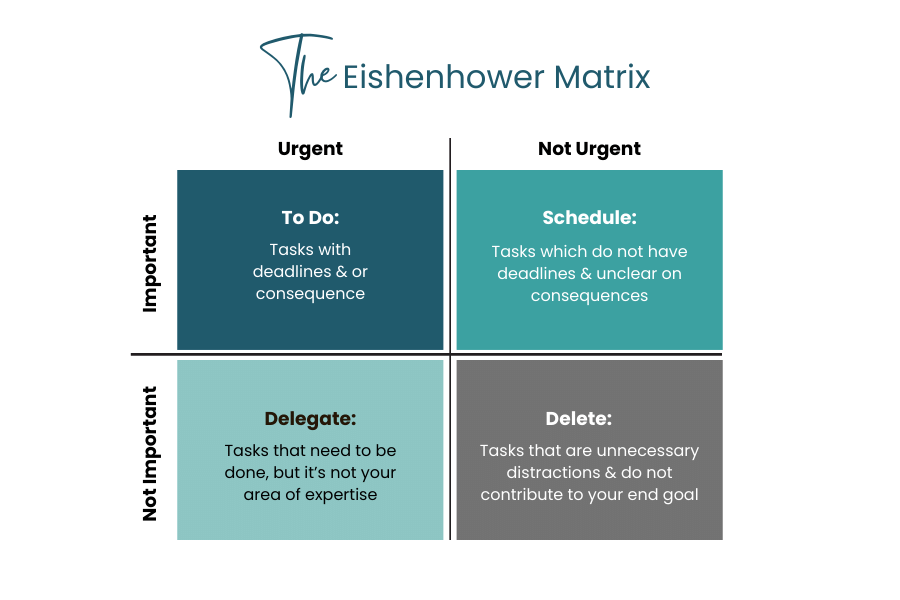
EP11 Setting Meaningful Goals for the end of 2023
In this episode, I explore the power of setting meaningful end-of-year goals and provide insights on using the SMART goal framework, breaking down goals, staying accountable, tracking progress, overcoming obstacles, and celebrating achievements. Join me as we make the most of the last 13 weeks of 2023!
The end of the year is fast approaching, and with just 13 weeks left in 2023, it’s the perfect time to reflect on your journey, set meaningful end-of-year goals, and make these last weeks truly count. Goal setting isn’t just about creating a checklist of things to accomplish; it’s a transformative process that empowers you to shape your future, find purpose in your actions, and ignite the motivation needed to achieve your dreams. In this episode, we’ll delve into the art of goal setting, providing valuable insights and practical strategies to help you unlock your potential and experience personal growth like never before.
The Power of Goal Setting
Setting goals is not merely an exercise in creating a to-do list; it’s a fundamental pillar of personal development. It’s about consciously and deliberately charting the course of your life, taking control of your journey, and creating a roadmap to the future you desire. Goals serve as guiding lights, providing direction, purpose, and clarity to our aspirations.
At its core, goal setting is an essential aspect of personal growth because it challenges us to stretch beyond our comfort zones and discover our true potential. When we set ambitious goals, we commit to growth, adaptation, and continuous learning. Each step we take towards our goals becomes a stride in our personal evolution.
One of the most beautiful aspects of setting goals is the motivation it generates. When you have a clear target in mind, something you are passionate about achieving, it becomes a powerful source of motivation. It gets you out of bed in the morning, propels you to overcome obstacles, and keeps you unwaveringly focused when distractions threaten to derail your journey.
Setting the Stage with SMART Goals
To effectively turn your aspirations into actionable plans, consider utilizing the SMART goal framework. SMART is an acronym that stands for Specific, Measurable, Achievable, Relevant, and Time-bound. It’s a methodical approach that transforms vague intentions into precise and attainable objectives.
Let’s dive into each component of SMART goals:
Specific: Specific goals are well-defined and clear. They answer the “what,” “why,” and “how” of your goal. For example, instead of a vague goal like “Get in shape,” a specific goal would be “Lose 5 kilograms by the end of December through regular exercise and a balanced diet.”
Measurable: Measurable goals have a quantifiable aspect, allowing you to track progress and determine when you’ve achieved them. In our previous example, “Lose 5 kilograms” is measurable because you can track your weight loss progress.
Achievable: Achievable goals are realistic and attainable within your current circumstances and resources. It’s essential to set goals that challenge you but are still within your reach. For instance, setting a goal to run a marathon within a month without prior training might not be achievable and could lead to discouragement. Ensuring your goals are attainable prevents a defeatist mindset and promotes personal development.
Relevant: Relevant goals align with your overall objectives and core values. They need to matter to you personally. Ensure that your goals contribute to your long-term growth and happiness. For example, if your long-term goal is to advance in your career, setting a fitness goal might not be as relevant as a professional development goal.
Time-bound: Time-bound goals have a clear deadline or timeframe for completion. Adding a specific time frame creates a sense of urgency and helps you stay focused. Going back to our previous example, “by the end of December” provides a clear timeframe.
Transforming Vague Aspirations into SMART Goals
Let’s take a look at how you can apply the SMART framework to transform vague aspirations into actionable SMART goals. Consider the following example:
Vague Aspiration: “I want to read more.”
SMART Goal: “I will read one book per month for the next three months, starting with ‘Book Title’ in October, ‘Book Title’ in November, and ‘Book Title’ in December.”
See the difference? The SMART goal is specific, measurable (one book per month), achievable (within three months), relevant (if reading aligns with your personal growth goals), and time-bound (over the next three months).
By embracing the SMART framework, you not only clarify your intentions but also set yourself up for success by creating a structured and actionable plan.
Breaking Down Goals for Success
One critical aspect of goal setting is breaking down larger, more complex goals into smaller, actionable steps. Have you ever set a grand, ambitious goal and then felt overwhelmed by its sheer magnitude? It’s a common experience, and that’s where breaking down goals comes to the rescue.
Breaking down goals involves taking that grand vision and deconstructing it into smaller, manageable pieces. This approach is a game-changer because it significantly reduces overwhelm. Rather than feeling like you’re facing an insurmountable mountain, you’re presented with a series of manageable hills.
Here’s another magical element: motivation. When you break down a goal, you create opportunities for small wins along the way. These victories, regardless of their size, provide a sense of progress and accomplishment. This, in turn, fuels your motivation to keep moving forward.
So, how do you effectively break down your goals? Consider these tips and strategies:
Start with the End in Mind: Begin by envisioning your end goal. What does success look like? Be as detailed as possible.
Identify Milestones: Break your goal into major milestones or checkpoints. These are significant steps that lead you closer to your end goal.
Create Task Lists: For each milestone, create a list of specific tasks that need to be completed. These tasks are your actionable steps.
Set Deadlines: Assign deadlines to each task or milestone. This adds a sense of urgency and keeps you accountable.
Prioritize: Not all tasks are equal. Prioritize them based on their importance and impact on your goal.
Focus on One Step at a Time: Don’t try to tackle everything at once. Concentrate on one task or milestone at a time.
Review and Adjust: Periodically review your progress and adjust your plan as needed. Flexibility is key.
Consider this example: Suppose your end-of-year goal is to improve your physical fitness and establish a consistent workout routine.
Milestone 1: Define Your Fitness Goals (By October 10th)
Tasks: Set specific fitness objectives (e.g., lose weight, gain muscle, improve endurance), determine your starting point (e.g., current weight, fitness level), and consult a fitness expert or trainer if necessary.
Milestone 2: Create Your Workout Plan (By October 20th)
Tasks: Research and select a suitable workout program (e.g., strength training, cardio, yoga), design a weekly exercise schedule, and gather any necessary equipment or gym memberships.
Milestone 3: Establish a Nutritional Plan (By November 1st)
Tasks: Consult a nutritionist or research a balanced diet that aligns with your fitness goals, create a meal plan, and ensure your kitchen is stocked with healthy options.
Milestone 4: Begin Your Workout Routine (By November 10th)
Tasks: Start your first workout, whether it’s at home or at the gym, and commit to a specific number of workouts per week. Make sure to schedule them in your calendar.
Milestone 5: Track Progress (Ongoing)
Tasks: Regularly measure and record your progress, such as weight, body measurements, and workout performance. Celebrate small fitness achievements along the way.
Milestone 6: Adjust and Set New Goals (Ongoing)
Tasks: As you progress, adjust your workout routine to challenge yourself further. Set new fitness goals based on your evolving capabilities and desires.
Breaking down your fitness goal in this manner not only makes it more manageable but also provides a structured plan to follow. It keeps you on track, allows for continuous improvement, and increases the likelihood of successfully establishing a lasting workout routine by the end of the year.
Remember, it’s not just about the destination; it’s about the journey of personal growth and achievement.
Accountability and Tracking Progress
As you embark on your goal-setting journey, two essential aspects come into play: accountability and tracking progress.
Accountability can be likened to having a supportive friend who checks in on your progress, encourages you to stay on track, and helps you stay committed to your goals. Here are some strategies to help you stay accountable:
Share Your Goals: Share your goals with a trusted friend, family member, or mentor. Sharing them with someone you trust can create a sense of responsibility to follow through.
Set Regular Check-Ins: Schedule regular check-in meetings with your accountability partner. These meetings provide an opportunity to discuss your progress, setbacks, and strategies for moving forward.
Use Technology: Leverage goal-tracking apps or platforms. Many apps allow you to set and monitor your progress, and some even offer community features where you can connect with others pursuing similar goals.
Create a Visual Reminder: Post your goals in a visible place, such as your workspace or on your phone’s home screen. Visual reminders can help keep your goals front and center in your daily life.
Now, let’s talk about tracking progress. It’s not just about recording your achievements; it’s about recognizing how far you’ve come and keeping your motivation high.
When you track your progress, you create a record of your successes, no matter how small. This documentation provides a sense of accomplishment, which, in turn, boosts your motivation to keep going.
Tracking progress also allows you to identify patterns and trends. You can see what’s working well and where you might need to adjust your approach. It’s a valuable tool for learning and growth.
In our fast-paced lives, it’s easy to lose sight of our goals amid the whirlwind of daily responsibilities. Tracking your progress serves as a constant reminder of what you’re striving for, helping you maintain focus even when distractions arise.
Effective Tracking Progress Tools and Techniques
Consider these tools and techniques for effectively tracking your progress:
Journaling: Keep a goal journal where you record your daily or weekly progress. Write down your achievements, challenges, and reflections on your journey.
Goal-Tracking Apps: Explore apps like Trello, Habitica, or dedicated goal-tracking apps that allow you to set, update, and visualize your progress toward your goals.
Visual Aids: Create visual charts or graphs that illustrate your progress. Seeing your advancements can be highly motivating.
Regular Reviews: Schedule regular reviews of your goals. Whether it’s weekly, monthly, or quarterly, these checkpoints allow you to assess your progress and adjust your strategies as needed.
Staying accountable keeps you committed to your goals, while tracking progress fuels your motivation and provides valuable insights into your journey.
Overcoming Obstacles
Let’s address some common obstacles that you might encounter on your path to achieving your goals. These obstacles can include procrastination, self-doubt, and distractions.
Procrastination often acts as our kryptonite when it comes to achieving our goals. It can stem from a fear of failure, perfectionism, or simply feeling overwhelmed. Here are some practical solutions and mindset shifts to overcome procrastination:
Break down your goals into the smallest possible tasks. This reduces the intimidation factor and makes it easier to get started.
Use the Two-Minute Rule: If a task can be completed in two minutes or less, do it immediately. This can create momentum and help you overcome inertia.
Practice Self-Compassion: Be kind to yourself. Understand that everyone procrastinates at times, and it doesn’t define your worth or abilities.
Focus on Progress, Not Perfection: Shift your mindset from striving for perfection to valuing progress. Embrace the idea that imperfect action is better than no action.
Self-doubt can creep in when you start questioning your capabilities or worthiness of achieving your goals. Here are a few ways to combat those doubts:
Use positive affirmations to counter negative self-talk. Replace “I can’t do this” with “I am capable and determined.”
Acknowledge and celebrate your achievements, no matter how minor they may seem. This builds confidence over time.
Whenever self-doubt arises, challenge those thoughts with evidence of your past successes and capabilities.
Distractions are abundant in our modern world, from the lure of social media to cluttered workspaces. Here’s how to stay on track:
Set Clear Boundaries: Create dedicated, distraction-free time for working on your goals. Turn off notifications and let others know you’re not available during this time.
Prioritize Tasks: Use the Eisenhower Matrix to identify tasks that are important but not urgent. It helps you distinguish between tasks that contribute to your long-term success and those that are merely distractions.

Celebrating Achievements
Moving forward, let’s explore the significance of celebrating achievements, both big and small, along your goal-setting journey. Celebrating achievements is a crucial element for reaching meaningful end-of-year goals.
Why is celebrating achievements so vital? It’s because celebrating serves as fuel for your motivation and a source of positive reinforcement for your efforts.
When you take a moment to celebrate a win, you’re essentially giving yourself a pat on the back. It’s a way of saying, “I did it, and I’m proud of myself.” This boosts your morale and enhances your sense of self-worth, which is essential for staying motivated.
Imagine a journey where there are no milestones, no markers to show you how far you’ve come. It could be disheartening, right? Celebrating achievements creates those milestones. Each celebration reminds you that you’re making progress, no matter how slow or challenging the journey may be. It keeps the fire of motivation burning.
Creative Ways to Celebrate Achievements
Now, let’s get creative. Celebrating achievements doesn’t have to be grand or expensive. It can be as simple or as elaborate as you like. Here are some ideas:
Reward Yourself: Treat yourself to something you enjoy. It could be a new book, a relaxing bath bomb, or a favorite meal.
Keep a Journal: Maintain a journal where you write down your achievements and how they make you feel. Reflecting on your successes can be a powerful motivator.
Share with Friends: Share your achievements with friends. The support and encouragement from others can be incredibly uplifting.
Create a Vision Board: Develop a vision board or digital collage of your goals. Celebrate each time you add a new achievement or milestone to it. This serves as a visual reminder of your progress and accomplishments.
In conclusion, setting meaningful end-of-year goals is a transformative journey that empowers you to take control of your future, find purpose in your actions, and stay motivated on the path of personal growth. Embracing the SMART goal framework, breaking down goals into manageable steps, staying accountable, tracking progress, and celebrating achievements are all key elements of this empowering process. As you navigate obstacles and celebrate your wins, you’ll discover the incredible potential within yourself to turn dreams into reality.
So, here’s to making the most of the final 13 weeks of 2023, to designing your destiny, and to creating a life that aligns with your values and dreams. It’s not just about the destination; it’s about the beautiful journey of growth and achievement.
Remember, your goals are not mere destinations; they are the milestones that mark your personal evolution. Celebrate every step of the way.
If you found this episode valuable, don’t forget to subscribe, share it with a friend, and leave a review. Your support means the world to me as we continue this journey of self-discovery and personal growth together. Stay tuned for more inspiring episodes, and until next time, keep dreaming, keep achieving, and keep becoming the best version of yourself.
